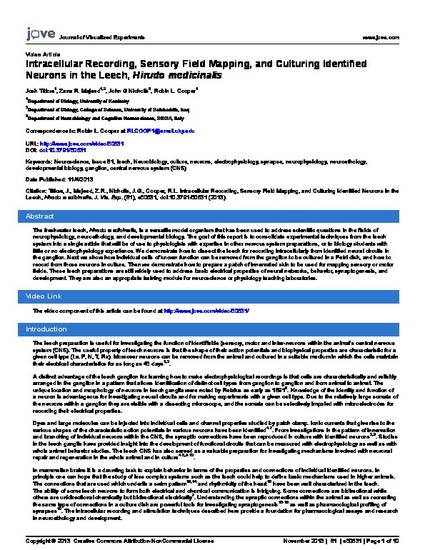
The freshwater leech, Hirudo medicinalis, is a versatile model organism that has been used to address scientific questions in the fields of neurophysiology, neuroethology, and developmental biology. The goal of this report is to consolidate experimental techniques from the leech system into a single article that will be of use to physiologists with expertise in other nervous system preparations, or to biology students with little or no electrophysiology experience. We demonstrate how to dissect the leech for recording intracellularly from identified neural circuits in the ganglion. Next we show how individual cells of known function can be removed from the ganglion to be cultured in a Petri dish, and how to record from those neurons in culture. Then we demonstrate how to prepare a patch of innervated skin to be used for mapping sensory or motor fields. These leech preparations are still widely used to address basic electrical properties of neural networks, behavior, synaptogenesis, and development. They are also an appropriate training module for neuroscience or physiology teaching laboratories.
Available at: http://works.bepress.com/robin_cooper/102/

Published in Journal of Visualized Experiments, v. 81, e50631, p. 1-10.
Copyright © 2013 Creative Commons Attribution-NonCommercial License.